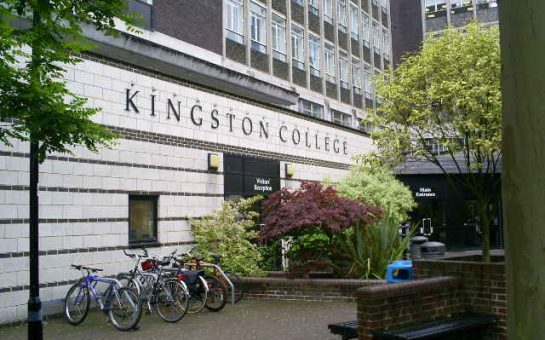National Braille Week runs from October 7 to 13.

For most of us, all we will experience of Braille is brushing against a couple of raised dots on a sign and wondering how they could possibly symbolise a word.
But for the estimated 41,100 living with sight-loss in South West London, according to the Royal National Institute of Blind People’s 2013 statistics, Braille is significantly more.
This is National Braille Week, a week to recognise the importance of Braille to the nearly 2million people living with sight-loss in the UK, and raising awareness and understanding of the use of Braille today.
Emma Thompson, a spokesperson for the Royal London Society for Blind People, said: “We recognize that Braille is and continues to be useful for many people. It’s a key to education and literacy for so many.”
Invented by Louis Braille in 1824, it is a system of touch reading and writing that uses raised dots to represent the letters of the alphabet.
It isn’t a language, but a code by which all languages may be written and read, and as such can be used as a way to communicate for blind and partially-sighted people worldwide.
Louis Braille was born in France in 1809, and at the age of three developed an eye infection that resulted in his total blindness.
The inspiration to invent the tactual language came when Louis received a scholarship to the Royal Institution for Blind Youth in Paris, where he was the youngest student at only 10 years old.
Braille was originally inspired by Louis’ desire to discover books and reading, and evolved from a night-writing system, used on battlefields to send military messages that could be read without light.
Technology is always being developed to further aid Braille users. Software programs and portable electronic note-takers are just two of the ways that Braille is being enhanced and simplified by technological advances.
But as technology is helping to develop how Braille is used, increasing popularity of audio and touch-screen technology is also contributing to its decline.
Ms Thompson said that only a very small proportion of young people still use Braille today, as technology provides more and more methods of communication.
“But like with everyone, where technology is developing there’s a drop in people’s ability to spell, knowledge of grammar, everything,” she said.
The strongest argument for the importance of retaining Braille as a form of written word is the ‘literacy argument’.
Those who learn to read through Braille have a much better understanding of spelling and punctuation, and have a much higher chance of securing a job, according to a survey conducted by Louisiana Tech University in 2012.
“This is why educational technology needs to be made hugely accessible to young visually-impaired people, to increase literacy,” she said.
“It’s really important to still have a National Braille Week, both in a celebratory sense, and to highlight the employment and literacy issues for young visually-impaired people today.”
The dates of National Braille Week have been moved this year to include World Sight Day on October 10, which is a day for international recognition of blindness and visual impairment.
World Sight Day also focuses on the prevention and treatment of blindness, with a global initiative called Vision 2020: The Right to Sight, which aims to eliminate avoidable blindness by the year 2020.
Photo courtesy of by außerirdische sind gesund, with thanks.
Follow us @SW_Londoner




